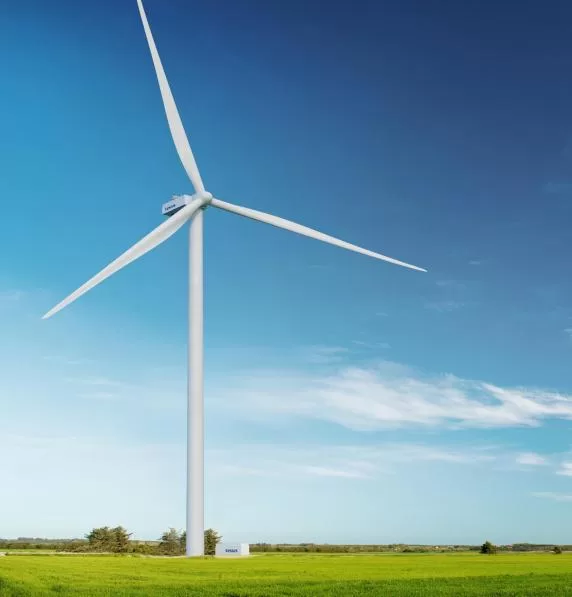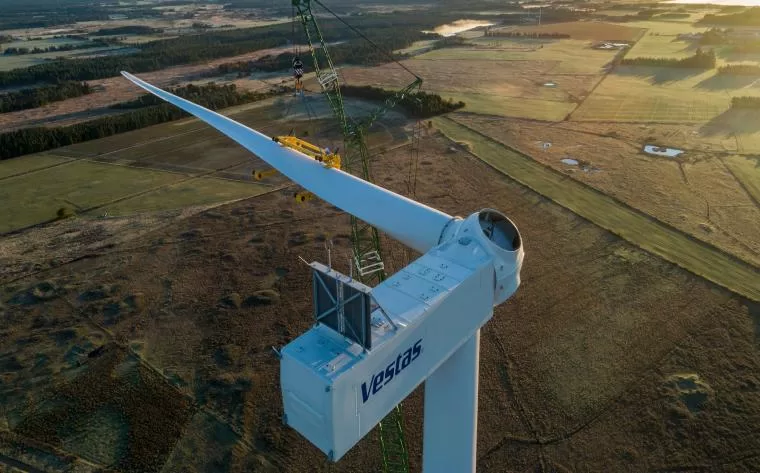Leading global wind turbine manufacturer, Vestas, will soon supply 10 units of its 6.2 MW wind turbines, totaling to 62 MW capacity, to Profen 2 wind farm project in Germany. Being developed on a opencast mining land in Saxony-Anhalt, Profen 2 will receive the 10 units of Vestas’ 6.2 MW turbines in Q1 2026 . This will also see to the possibility of subsequent project commissioning scheduled for Q1 2027.
Project factsheet
Location: Saxony-Anhalt, Germany
Wind farm type: Onshore
Total capacity: 60 – 62 MW
Project status: Development
Developer: Mitteldeutsche Braunkohlengesellschaft (MIBRAG)
Contractors involved: Vestas
A look at the Profen 2 wind farm project in Saxony-Anhalt, Germany
MIBRAG’s Profen 2 in the reclaimed mine area in southern Saxony-Anhalt is expected to supply around 46,000 homes with clean wind energy. This will be from 2027 once Profen 2 is connected to Germany’s power grid.
Following construction approval in July of 2024 by the Federal Immission Control Act, the Profen 2 wind farm will generate more than 160,000 MWh of electricity from the 119 – 169 meter tall turbines.
Also note-worthy is the presumptive and subtle change in the standard output capacity from the wind farm. Upon previous procurement arrangement with German-based GE Wind Energy, Profen 2 was to work with a 60 MW capacity from the previously agreed upon 10, 6.0–164 wind turbines. Danish-based Vestas supplying Profen 2 wind farm in Germany with 10 units of 6.2 MW turbines will invariably infer to the increased standard working output from the project to 62 MW.
However, the working standard capacity could still remain at 60 MW as planned since the 6.2 MW Vestas turbines have a 60 MW operational mode that can allow for either capacity preference.
The project also has the production of green hydrogen through electrolysis in prospect.
The 6.2 MW Vestas wind turbines to stand in Profen 2 wind farm in Germany
Vestas’ 10 units of V162-6.2 MW turbines feature in the EnVentus™ design module. Along with other 3 variants (V150-6.0, V162-7.2, and V172-7.2 ) in the EnVentus™ catalog, the turbines have been designed with versatility and efficiency in mind.

According to Vestas, combining the power of the 2, 4, and 9 MWs platforms, the 10 turbine units to Profen 2 will be able to function optimally even in turbulent, and low-speed winds.
More on the sustainability of the turbines are the specific features curved into their design. According to Vestas, all EnVentus™ turbines feature a slender profile and pre-bent blades. These are optimised for weight through application of carbon pultrusion material and a structural shell blade design. This allows for the optimisation of the structural loads while increasing the rotor sizes, a feature that intuitively adds to the advanced aerofoil design ensuring sustained high aerodynamic performance.
Upclose look at the V162-6.2 turbine specification factsheet
Power and Operating data
Power regulation: Pitch regulation with variable speed
Rated power: 6.2 MW
Cut-in wind speed: 3m/s
Cut-out wind speed: 25 m/s*
Wind class: IEC S
Standard operating temperature: -20°C to +45°C range
Rotor and sound power data
Rotor diameter: 162 meters (m)
Sweep area: 20,612 m2
Aerodynamic brake: Full blade feathering with 3 pitch cylinders
Electricity frequency: 50/60 Hz
Converter: Full scale
Gearbox type: Two planetary stages
Hub tower heights: 119m – 169m range
Maximum sound power level: 104.8dB*
Turbine options for the V162-6.2 turbine
– 6.0 MW Operational Mode
– Condition Monitoring System
– Oil Debris Monitoring System
– Service Personnel Lift
– Low Temperature Operation to -30°C
– Vestas Ice Detection, Anti-Icing System, and Shadow Flicker Control System
– Aviation Lights
– Aviation Markings
– Fire Suppression System
– Vestas Bat Protection System
– Lightning Detection System
Sustainability figures
Carbon footprint: 6.2g CO2 e/kWh
Return on energy break-even: 6.5 months
Lifetime return on energy: 37 times
Recyclability rate: 84%
In addition to this, the V162-6.2 IEC S model has over 30% higher energy production than the V150-4.2 MWT
* While the mentioned metrics are based on an externally reviewed Life Cycle Assessment overseen by the manufacturer, variability depends on site-specific condition.

